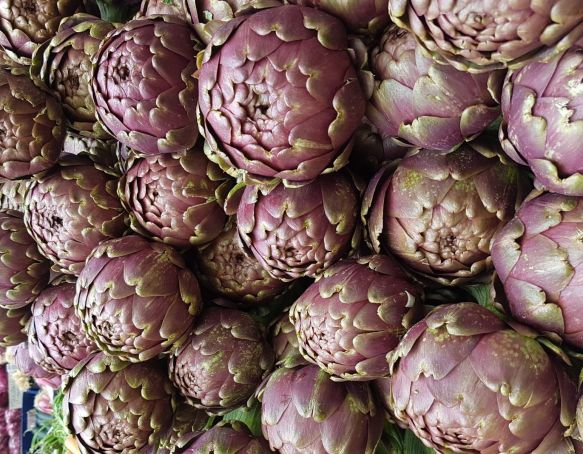Rome recipe: Carciofi alla Giudia
Romanesco artichokes hit their peak season in spring.
As a signature dish of Jewish-Roman cuisine, carciofi alla giudia (Jewish-style, deep-fried artichokes) are a must-eat dish in the Eternal City.
Although many restaurants, particularly in the Jewish Ghetto, serve them almost year-round, it is in the springtime when the local romanesco artichokes hit peak season that they are at their best.
Making carciofi alla giudia at home is simpler than it looks. It helps if you can purchase your artichokes ready-cleaned (most market stalls will do this for you), otherwise factor in a little extra time to prepare them.
The locally-grown Roman artichokes are spherical, with abundant, tightly packed leaves and no inner choke. The artichokes are fried twice, the first time at a lower temperature and for a longer period to ensure they are cooked through, and the second time at a high heat to open out the leaves and turn them golden. The outer layer of leaves should be hot and crunchy with the interior becoming softer and more tender. Don’t forget to eat the stalk too!
To make this recipe it is handy to have a kitchen thermometer as the artichokes are fried at two different temperatures, but it is possible to make them without. Just use a smaller ring on the stove for the first fry and a larger one for the second.

CARCIOFI ALLA GIUDIA
4 Roman artichokes
2 lt vegetable oil
1 lemon
Salt
Pepper
Firstly, if not already done, you will need to trim and clean the artichokes. Start by removing the hard, outer leaves then, using a sharp knife, cut the stem, leaving around 5-6cm. Cut the top third off the head of the artichoke, then trim the leaves in a spiral motion until you get to the paler yellow leaves.
Trim the tougher exterior from the base of the stem.
Now halve the lemon and rub the artichokes before placing them in a large bowl of cold water along with the juice of the lemon and the rinds. This will prevent oxidisation turning the leaves black.
In the meantime, bring a large saucepan of vegetable oil to a temperature of 130°C, if you use a smaller ring on you stove you should prevent the oil getting too hot.
Drain the artichokes and dry them well with kitchen paper, then place them into the oil and cook for about 10 minutes. Test that the artichokes are cooked by poking a fork or skewer at the base of the stalk. If it goes in and out easily the artichokes are ready.
Remove the artichokes from the oil and leave them too cool on kitchen paper to absorb the excess oil.
Once they are cool, use your finger to open out the leaves, as if it were a flower. This will encourage them to open out further during the second frying. Sprinkle with salt and pepper, then heat the oil back up on a larger stove ring to a temperature of 190°. Carefully plunge the artichokes into the oil and cook for a few minutes until the leaves turn golden and crispy.
Remove the artichokes from the oil and leave them to drain for a minute before sprinkling with a little salt and serving hot and crunchy.
Kate Zagorski has lived in Italy since 2000. Married to a food-obsessed Roman chef, she leads food tours and also works as a freelance food and travel writer.

















